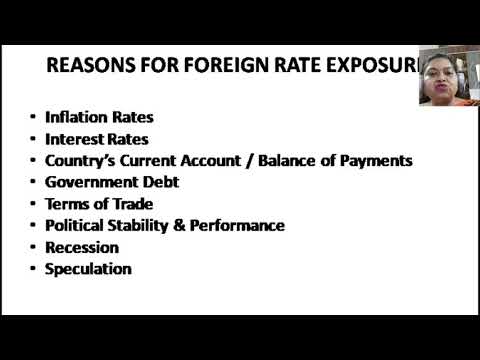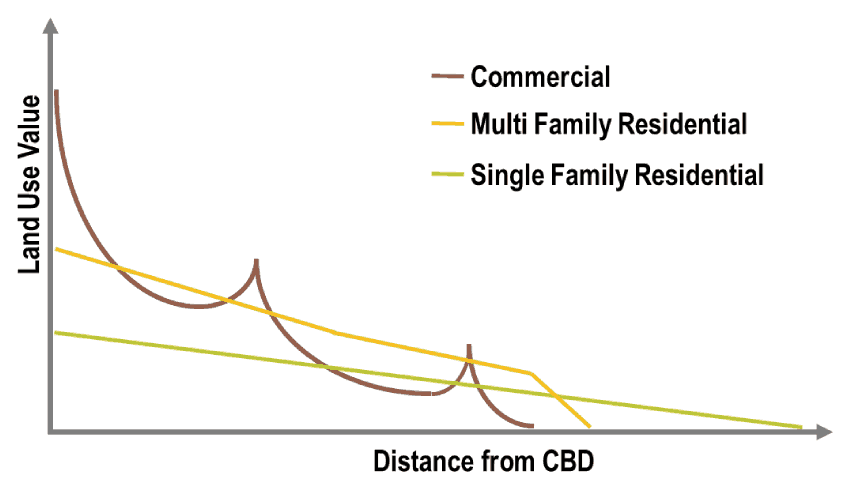Organic Growth vs Inorganic Growth: Understanding Pros & Cons
Contents:


Polychrome production must have involved considerable use of pigments, which are primarily derived from inorganic sources and therefore are likely to survive in archaeological contexts. On average, the quantities of organic and inorganic soil amendments applied did not seem to have changed greatly over the past 10 years. A VDR provider should be a trusted partner in these types of transactions and supply the appropriate tools required. These tools include secure access, enterprise-level encryption, multiple layers of security and user-friendly admin controls compatible with multiple operating systems. Caplinked, an industry leader in the VDR space, provides all these tools and more and can help save time and money in any of these corporate transactions.
The online survey was in the field from July 12 to July 22, 2016, and garnered responses from 1,175 C-level executives, senior managers, and midlevel managers. This group represents the full range of regions, industries, inorganic growth meaning sizes, and functional specialties. To adjust for differences in response rates, the data are weighted by the contribution of each respondent’s nation to global GDP.

The general consensus is that inorganic growth is a faster way for a company to grow than organic growth. The mantra in virtually every company is to gain more market share. All of these are totally valid, if not entirely typical, solutions for any company to grow, create wealth and add market share.
How Is Inorganic Growth Achieved?
We do not include them because they do not involve internal efforts, i.e. the growth came from outside. Offering new products or services and moving into a different market, i.e., diversifying, are also examples. Organic growth is 100% internal growth, i.e., when a business grows thanks entirely to the effective use of its own internal resources. Hence, the organic growth of our small businesses into medium-sized businesses has also become increasingly inhibited. As people could not rely on their finances, businesses began to go for organic growth from their turnover and profits.
Malcy’s Blog – Oil price, Kistos, Challenger, Harbour, Halliburton … – Proactive Investors UK
Malcy’s Blog – Oil price, Kistos, Challenger, Harbour, Halliburton ….
Posted: Thu, 27 Apr 2023 08:50:00 GMT [source]
Sourcing raw materials cheaply through developing a vendor network is one way to keep material costs in check. Any opinions in the examples do not represent the opinion of the Cambridge Dictionary editors or of Cambridge University Press or its licensors. This term is usually related with financial sectors showing expanding business and profits. SaaS or Software as a Service uses cloud computing to provide users with access to a program via the Internet, commonly using a subscription service format.
Benefits
On the other hand, inorganic growth happens when the business needs external support, such as merger, acquisition, and takeover, to grow. Organic growth is growth that a company can achieve by increasing output and enhancing sales, as opposed to inorganic growth from mergers or acquisitions. Consider that Company A is looking to leverage an inorganic growth strategy.
In those instances, inorganic growth may be exactly what is needed. Optimization of a business focuses on continuing to improve a business’s processes to reduce costs and set appropriate pricing strategies for products or services. Organic growth stands in contrast to inorganic growth, which is external growth, such as through mergers and acquisitions.
Happy Belly Signs LOI with Binding Provisions for the Acquisition of … – StreetInsider.com
Happy Belly Signs LOI with Binding Provisions for the Acquisition of ….
Posted: Mon, 10 Apr 2023 18:25:08 GMT [source]
Usually, companies acquire an existing business to share its customer base, operations and market presence. However, we also need to understand that it ends after the product or the company reaches saturation. From this point onwards, the company must either diversify or integrate. These can be achieved either internally or by applying various methods of organic growth. We’re looking at inorganic growth opportunities to move into service lines we don’t have yet.
Inorganic Growth vs. Organic Growth
One of the biggest benefits of inorganic growth is the high probability of success. Adding a new product, service, competing in a new geographical area, or gaining a large group of new customers quickly are all great reasons to go this route. For example, if Company A acquires Company B, the resulting company will have a larger customer base as well as being more competitive in the sector. However, not everything can be handled merely by growing organically. In some situations, an inorganic growth spurt is what is needed to reach those same goals — larger market share and created wealth for the stakeholders and/or shareholders.
Inorganic growth is a result of a company using mergers and acquisitions (M&A) and/or takeovers to increase revenue. An M&A is when two companies consolidate using various forms of financial transactions. Like virtually every other type of business dealing, there are multiple flavors of M&As, and rarely are two cases exactly alike. Understand that “mergers” and “acquisitions” have different meanings, but these two terms are grouped together as an umbrella for any number of business transactions.
File ITR, invest & save upto ₹46,800 in taxes on the go
The song is performed by Mrs. Brice and Fanny’s longtime choreographer and friend, Eddie Ryan ; the latter is one of the New York stage’s premier tap dancers, but his vigorous numbers feel like shoehorned extras, inorganic. Entrepreneurs create new businesses, taking on all the risks and rewards of the company. Learn about the challenges facing entrepreneurs and entrepreneurship. Comparable store sales is a retail store’s revenue in the most recent accounting period relative to the revenue from a similar period in the past. Hostile TakeoverA hostile takeover is a process where a company acquires another company against the will of its management.
What it excludes is the boost to growth from acquisitions, and the decline from sales and closures of whole businesses. For businesses organic growth typically excludes the impact of foreign exchange. “Core growth” is the term that is used to refer to growth that includes foreign exchange, but excludes divestitures and acquisitions. Beyond these core capabilities, other responses highlight which skills set apart the top-growth companies.

The pursuit of organic sales growth often includes promotions, new product lines, or improved customer service. Inorganic growth is the rate of growth of business, sales expansion etc. by increasing output and business reach by acquiring new businesses by way of mergers, acquisitions and take-overs. This kind of growth also takes place due to government directives, leading to enhancement of business in some identified priority sector/area. The inorganic growth rate also factors in the impact of foreign exchange movements or performance of other economies.
Join Macmillan Dictionary on Twitter and Facebook for daily word facts, quizzes and language news. Discover 11 crucial questions to ask when buying a business in this comprehensive guide. VDRs are commonly used during all phases of M&As, IPOs and other corporate development activities. The transparent glass roof of one greenhouse was fitted with a number of traditional inorganic solar panels, while the other’s ceiling was entirely composed of the semitransparent organic panel arrays.
In fact, the reason company B purchased its competitor is because company B’s sales were declining by 5%. Nowadays, people have also reduced office space as one can do a lot of work online. As a result, companies opt for shared working spaces to reduce fixed expenditures. There are various kinds of costs that go into producing goods and services.
According to respondents, a diversified approach is more common at larger companies than at smaller ones. It is also reported more often in developed markets than in emerging markets, where reliance on the creating strategy is most common. One of the most fundamentally sound things a company can do to fuel organic growth is to understand its target market. Most companies choose to focus on one of the core strategies mentioned above to fuel organic growth, as pursuing more than one can make it less clear what actions within a strategy are working and which aren’t. Also, as growth typically requires significant expenditures, it may be difficult for a company to fund more than one growth strategy at a time.
- As opposed to the organic growth, this kind of growth is affected to a great extent by exogenous factors.
- Acquisitions is a way of gaining instant access to a bigger market share and, thereby, increase earnings.
- Our GST Software helps CAs, tax experts & business to manage returns & invoices in an easy manner.
- Performing due diligence means thoroughly checking the financials of a potential financial decision.
More recently, digital tech—like artificial intelligence or its more experimental corollary, artificial life—has raised further questions as to whether inorganic beings might count among the court of the living. Warming temperatures allow bacteria in the water to turn inorganic mercury to methylmercury, which is easier for animals to absorb. Performing due diligence means thoroughly checking the financials of a potential financial decision. Ariel Courage is an experienced editor, researcher, and former fact-checker. She has performed editing and fact-checking work for several leading finance publications, including The Motley Fool and Passport to Wall Street.
A well-rounded company will likely adopt or practice all of the strategies at some point. Generally, only the top-tier level companies opt to utilize more than one strategy at once. They are companies that typically have more resources at their disposal. Sales RevenueSales revenue refers to the income generated by any business entity by selling its goods or providing its services during the normal course of its operations.
The company could develop and launch a line of iced tea products, but this could take time and involve a great deal of expense. That’s why companies will turn to acquisitions—inorganic growth—to maintain their competitive edge and keep shareholders happy. Companies will utilize revenue and earnings growth, on a quarterly or yearly basis, as the performance metrics by which to gauge organic growth.
However, we must think increasingly in terms of full and organic growth. The most likely route to that is by inward investment as well as by organic growth. We have found that housing development which is part of organic growth and the renewal of neighbourhoods is far more likely to be successful. It was a morality of organic growth and development, of common descent and collective destiny, a morality of power which recognised that in numbers there is strength. Future plans have been outlined that focus on organic growth and on returning money to shareholders. Organic growth is typically marked by an increase in output, greater efficiency and speed with production, higher revenue, and improved cash flow.
An investor with a control perspective needs a more significant reason for entering into inorganic growth. Organic growth in marketing is an essential factor in developing the brand. The sustainable existence of its range of products for decades makes the company a household name. For example, Coca-Cola has existed for decades because it grew organically first. A product has to become successful to create faith and confidence in the consumers about the company. AcquisitionsAcquisition refers to the strategic move of one company buying another company by acquiring major stakes of the firm.
Here there appears to be a distinction between organic and inorganic growth; but this distinction is by no means definite. When people refer to organic growth, they are essentially referring to growth stemming from a company’s operations. For example, if a company is in the business of making and selling soft drinks and sees sales of those beverages grow by 10%, that’s considered organic growth. Inorganic growth can be a solution for changing market conditions, but acquisitions can be risky and may not be a perfect fit.

0 comments